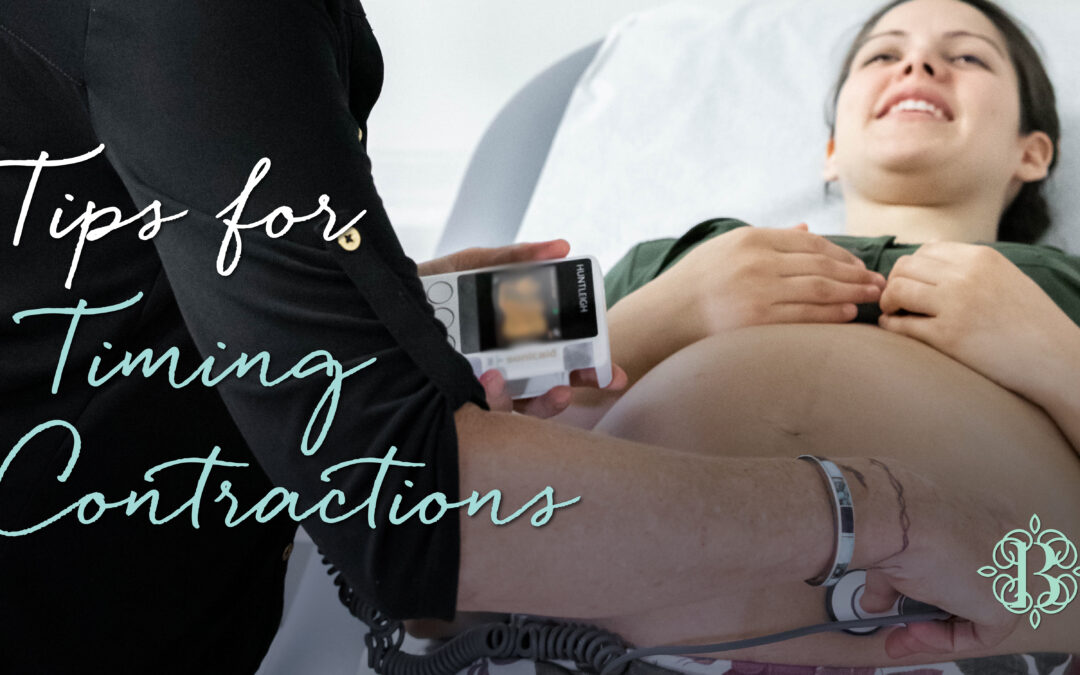Tips for Timing Contractions
Timing contractions is an important step during labor. It allows you and your healthcare provider to monitor the progress of labor and helps determine when it’s time to come in to the birth center.
It’s especially critical for first-time parents who may be unsure when active labor has begun and when to head to the birth center.
What are labor contractions like?
Contractions are the periodic tightening and relaxing of the uterine muscles. Many people compare early contractions to period cramps but more intense. These start irregularly but then transition into regular intervals and progressively increase in intensity.
They differ from the general discomfort or aches experienced during pregnancy that last only for a while because a pattern will slowly emerge with labor contractions.
How will I know when contractions start?
Several signs can help you identify when contractions begin. Here’s what to look for:
- The feeling of tightening: Contractions are characterized by a sudden tightening or hardening sensation in the abdomen. You may feel your belly becoming firm and then relaxing after the contraction.
- Period-like cramps: Some women describe early contractions as similar to menstrual cramps. The intensity may be a lot more, and it increases as your labor progresses.
- Low back pain: Contractions can also be felt as a feeling of pressure in the lower back.
- Regular pattern: Unlike Braxton Hicks contractions, true labor contractions tend to grow stronger, last longer, and are more frequent over time.
- Cervical changes: At the onset of labor, you may experience a “bloody show” (a pinkish or blood-tinged mucus discharge) or your water breaking (a gush or trickle of amniotic fluid.)
How am I supposed to time my contractions?
If you realize you’re in labor, here’s how to time your contractions:
- Use a timer: Utilize a stopwatch, smartphone app, or any other timing device to measure the duration of each contraction accurately. Start the timer as soon as you begin to feel a contraction and then stop it once it ends. If you can’t do it yourself, ask a friend or partner to help.
- Focus on the peak: Pay attention to the most intense part of the contraction. It is usually the peak of the tightening sensation.
- Track the frequency: Time how far apart the contractions are by noticing the time between the end of one contraction to the start of the other. It helps to use an app designed for this purpose.
- Time for at least an hour: Contractions may be irregular during the first hour of labor. It is recommended to time them for at least an hour to establish a pattern.
- Know when to go to the birth center: The timing and pattern of contractions can indicate when it’s time to head to the birt center. Your midwife will give you guidelines on when to come in and be in contact with you during early labor.
What is the 4-4-1 rule for contractions?
It’s a simple rule that helps parents know when they are likely in active labor and need to head to the birth center. Here’s how the 4-1-1 rule works:
4: The first number, “4,” refers to the frequency of contractions. It means that contractions are consistently about four minutes apart.
1: The second number, “1,” indicates the duration of contractions. It means that contractions last for about a minute, which suggests that you are progressing in labor.
1: The third number, “1,” refers to the duration of the timing pattern (1 hour). If you experience contractions about four minutes apart, lasting one minute each – for an hour.
When the contractions follow the 4-1-1 pattern, it’s good to head to the birth center, as you are likely in the active phase of labor.
If you have more questions about the best time to come to the birth center and ways to manage labor at home, be sure to ask in your next prenatal appointment!

